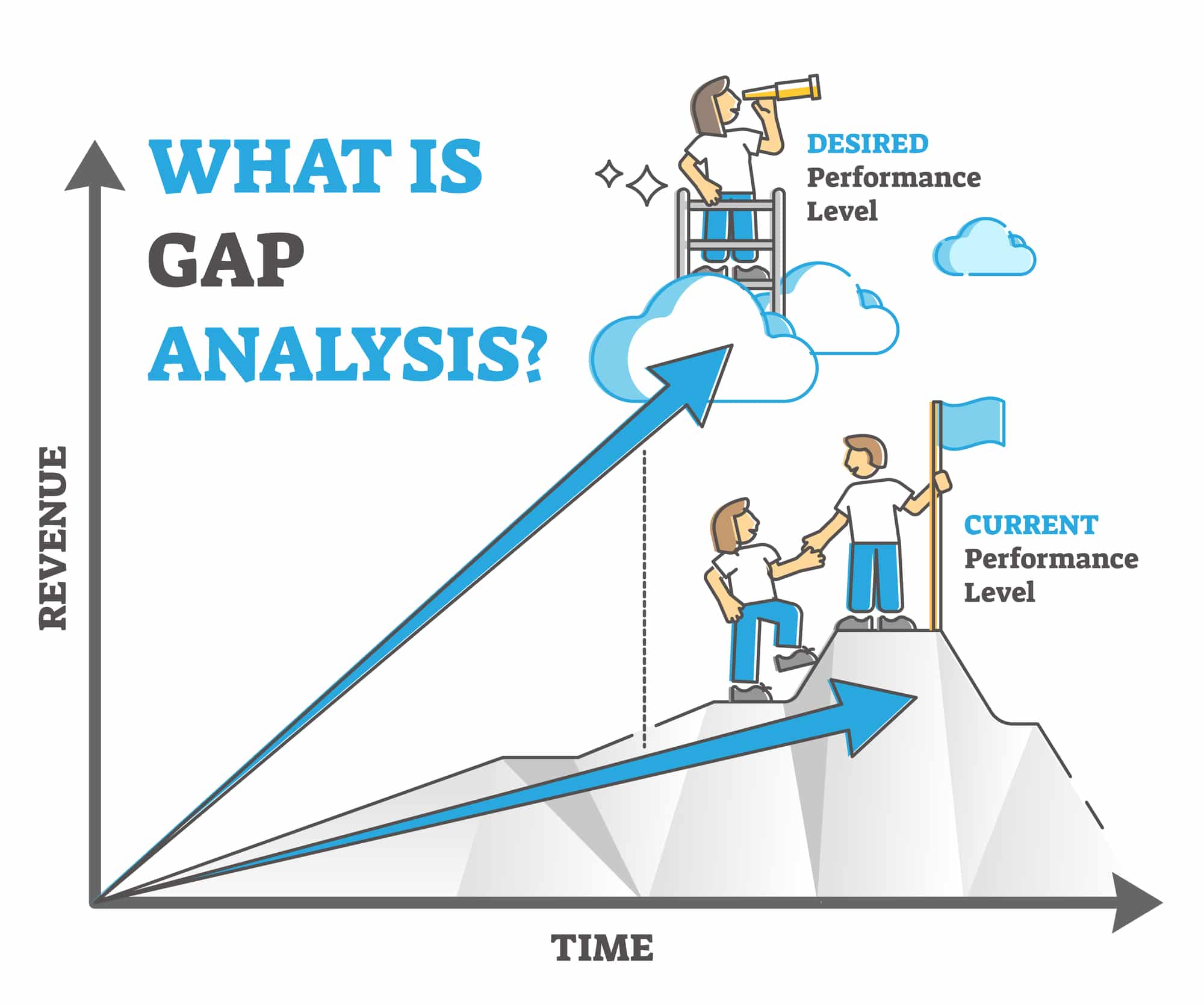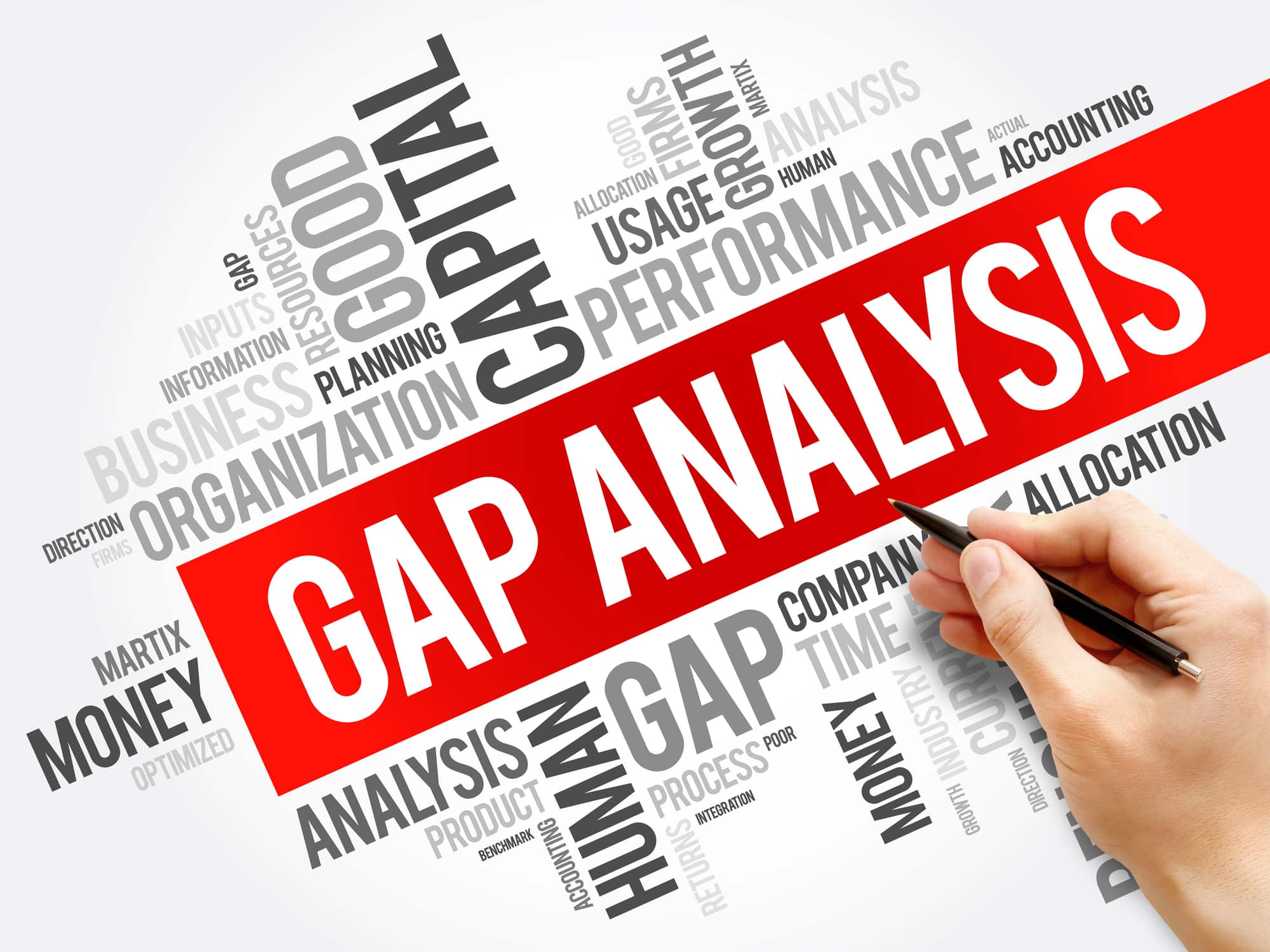GAP analysis tools include SWOT and PEST analysis, the Fishbone diagram, McKinsey 7S, and the Nadler-Tushman Congruence Model.
Whether it is your personal life or a professional one, chances are that you are looking to change things to some extent. This desired change is usually of a positive variety wherein you are looking to improve your current situation in some way or another. The way to go about doing so is by identifying where you are lacking, and here is where a GAP analysis comes into play. There are a number of GAP analysis tools you can use.
Before discussing the tools used for a GAP analysis, it is essential first to understand what is a GAP analysis and why it is used. While this concept can be applied to daily life, it is more relevant to the business world. If you are a business student, teacher, or professional, chances are that you have encountered this concept before.
Essentially, particularly in the business world, a GAP analysis is a method used by organizations to identify and compare their existing performance with the performance level they want to achieve. This expected change in performance is usually meant to be positive in nature.
The main purpose of using a GAP analysis is so that the company can figure out if it is performing according to set expectations and if its resources are being utilized effectively to reach the desired state. These resources can include but are not limited to money, labor, and time.
A GAP analysis can also be referred to as a need assessment, need analysis, or even need-gap analysis. Furthermore, this analysis can be performed on two main levels, namely, the strategic level and operational level, depending on the situation.
Moreover, a GAP analysis on a strategic level can refer to a situation where a company compares its existing performance with the set standards of the industry within which it operates. Whereas, an operational level GAP analysis can refer to when a company compares its current performance with its own desired performance.
This performance measurement can be in terms of customer satisfaction, revenue generation, cost of maintaining the supply chain, and productivity. Moreover, businesses in general and small businesses, in particular, can use this type of analysis to ensure that their resources are allocated and used effectively in the areas that need improvement.

GAP Analysis Process
The process of carrying out a GAP analysis is based on a standard template that includes four main steps. These steps include identifying the current state, identifying the desired state, identifying the gap between the two, and finding solutions to bridge that gap.
Identifying the Current State
This step involves assessing how the organization is currently performing. In some cases, the company is already aware of where it is lacking. If the company is not aware of this, it can assess itself by collecting the necessary information with respect to its products, customer satisfaction, processes, etc.
This information can be quantitative or qualitative, depending on the parameter that is being assessed. Moreover, the source of information can also vary from documents, stakeholder interviews, KPI’s (key performance indicators), or even observation.
When assessing the current state, it is essential to remember what aspect of the business is being assessed and to what end. For instance, the sales department will only be focused on improving sales to match the desired target, whereas the operations department will be more concerned with the product itself.
Identifying the Future State
Identifying the future state, also called the desired state or stretch goal, involves deciding where the company wants to be ideally, particularly in terms of its performance. The company can be performing quite well and still want to improve itself.
A good approach to identifying the future state can be to set S.M.A.R.T goals, i.e., goals that are specific, measurable, achievable, realistic, and time-bound. If the goals are specific, they will become easier to measure and achieve, provided they are realistic enough not to frustrate employees who must work on them.
It is also essential for the goals to be time bound because time is perhaps the most important and scarce of a company's resources. For instance, a S.M.A.R.T goal for an organization could be to achieve a 50% increase in customer satisfaction within the year.
Identifying the GAP
This stage involves looking at the information from the first two stages and comparing them to identify the areas or aspects the company lacks or could benefit from improving.
For instance, a look at the marketing department’s performance can result in the observation that the outsourcing of its advertisements to different organizations has led to the formation of an inconsistent image of the brand, which does not align with its goal to improve its brand image at the end of the year.
Finding the Solutions
Once the GAP has been identified, the logical step would be to find out how to bridge this gap to produce better results. For instance, when outsourcing advertising activities results in an inconsistent message that negatively affects the brand’s image, a plausible solution would be to bring the advertising activities in-house and invest resources accordingly.
This may result in achieving the goal of presenting a consistent and strong image as well as improving the advertising department in the long run.
Implementing Change
An additional step could be to implement or make use of the solutions devised in step four. It could entail steps to bridge the gap using the available solutions. Furthermore, it is also important to consider the sentiments of employees and the organizational structure, etc.

GAP Analysis Tools
Several tools can be utilized to effectively carry out a GAP analysis, including SWOT and PEST analysis, the Fishbone diagram, McKinsey 7S, and the Nadler-Tushman Congruence Model.
SWOT Analysis
Perhaps one of the most well-known tools in marketing and a common tool for carrying out a GAP analysis is a SWOT analysis. It is nearly impossible to be involved in the business sector and not know what a SWOT analysis is. SWOT represents the strengths and weaknesses of a company as well as the opportunities and threats for that company.
With respect to a GAP analysis, a SWOT analysis can help companies identify the internal (strengths, weaknesses) and the external factors (opportunities, threats) that they can either improve upon or keep in mind.
For instance, a company may assess its strengths and weaknesses and reallocate some of its resources to a problem area it wishes to improve. Moreover, if the company is performing well and wants to improve further, it can consider the available opportunities and use its resources accordingly.
PEST Analysis
Another popular tool is the PEST analysis which essentially focuses on the external factors that an organization must take into consideration. This acronym represents the political, economic, social, and technological factors a company needs to consider. An extended version that includes two more factors is the PESTLE analysis, where the last two alphabets stand for legal and environmental concerns.
This analysis can help the company focus on external factors preventing it from achieving its desired goals, such as unfavorable political situations that cause currency fluctuations. On the other hand, it can also help identify factors that can bridge the gap between the organization’s current and desired state, such as technological improvements that allow greater connection with customers.
Fishbone Diagram
Also referred to as the cause-and-effect or “Ishikawa” diagram, the Fishbone diagram can be used to identify problem areas. Essentially, a Fishbone diagram helps break down a major problem into smaller problems that are easier to understand and handle.
It does so by placing a major problem at the center and creating branches from that problem that represent the categories or aspects relevant to that category. These categories can further be simplified into smaller sub-categories represented by branches extending from the main categories branches.
McKinsey 7S
This framework utilizes seven people-centered components to determine an organization’s performance and how certain factors affect the organization’s operations. These components can be organized into two major categories, i.e., the hard and soft elements.
The three hard elements include strategy, structure, and system, whereas the other four soft elements comprise skills, shared values, staff, and style. The person responsible for carrying out the GAP analysis fills out the existing and desired state for each category to determine where the gap exists.
They then proceed to come up with and implement a suitable solution that can reduce or close the distance between the existing and desired state to improve performance or achieve the set goals.
Nadler-Tushman Congruence Model
Yet another model for problem identification is the Nadler-Tushman Congruence Model, which involves finding out exactly how an organization is underperforming and then coming up with solutions to deal with the situation.
According to this model, a company’s internal aspects or business processes must be consistently aligned for the company to perform adequately and achieve success. The main components of this model include people, culture, work, and structure.
These components receive input data, i.e., the company’s strategy, and output data, i.e., the organization’s performance, to find out how these four elements are aligned.
This model divides business processes into three categories, i.e., inputs, transformation, and outputs, where inputs are the operational environment, resources, and culture. In contrast, the transformation includes the systems, activities, and people used to convert inputs to outputs.
Creating a GAP Analysis in Excel
Creating a GAP analysis in Excel involves five main steps: defining focus areas, identifying desired state, assessing current state, choosing the right KPI’s and creating an action plan.
Defining Focus Areas
The first step involves defining the scope within which the analysis will be performed. Certain major areas include financial growth, customer satisfaction, innovation, employee satisfaction, impact on the community, etc.
These focus areas are essentially the aspects that an organization wants to improve as a result of a GAP analysis.
Identifying the Desired State
While the common approach is to identify the current state before the future state, there is a certain problem with that approach. A company's current situation can vary exponentially depending on who you are talking to or which department or area you are focusing on.
Hence a better approach is to focus on identifying the desired future state; this can be done by taking an area of focus from the first step and broadly defining it to reflect a desired future state. For instance, a company’s desired future state can become the best organization in terms of customer satisfaction within its specific industry.
Assessing Current State
With respect to the focus areas identified in the first step and consequently described in the second step, organizations need to broadly and honestly define their current state with respect to those areas.
For instance, a current state with respect to the customer satisfaction focus area can be that while customers are generally satisfied with the organization, the smaller segment of customers is less satisfied with the company’s performance.
Choosing the Right KPIs
Moving from general to specific, the fourth step involves identifying key performance indexes (KPIs) to measure each of the focus areas. It is best to choose KPIs that the company already has a baseline for and utilize both leading as well as lagging KPIs.
Creating an Action Plan
Lastly, creating an action plan to bridge the identified gaps is perhaps the most complicated step. It involves creating projects for each focus area; the number of projects depends on the analyst. However, a minimum of two projects for each gap is recommended.

GAP Analysis Tools: Conclusion
Knowing how to carry out a GAP analysis is essential for any organization to perform effectively or improve itself to achieve its goals and stay ahead of its competitors.
The organization must objectively define its current state, decide on a desired future state, assess both to find the gap between the two, find solutions to bridge this gap and develop an action plan to implement the solutions.
Companies can use several GAP Analysis tools such as SWOT, PEST analysis, fishbone diagram, McKinsey 7S, and the Nadler-Tushman model to carry out a GAP analysis effectively.
It is essential to remember that companies must be completely honest and transparent, particularly with respect to their strengths and weaknesses, for the analysis to be carried out effectively.


